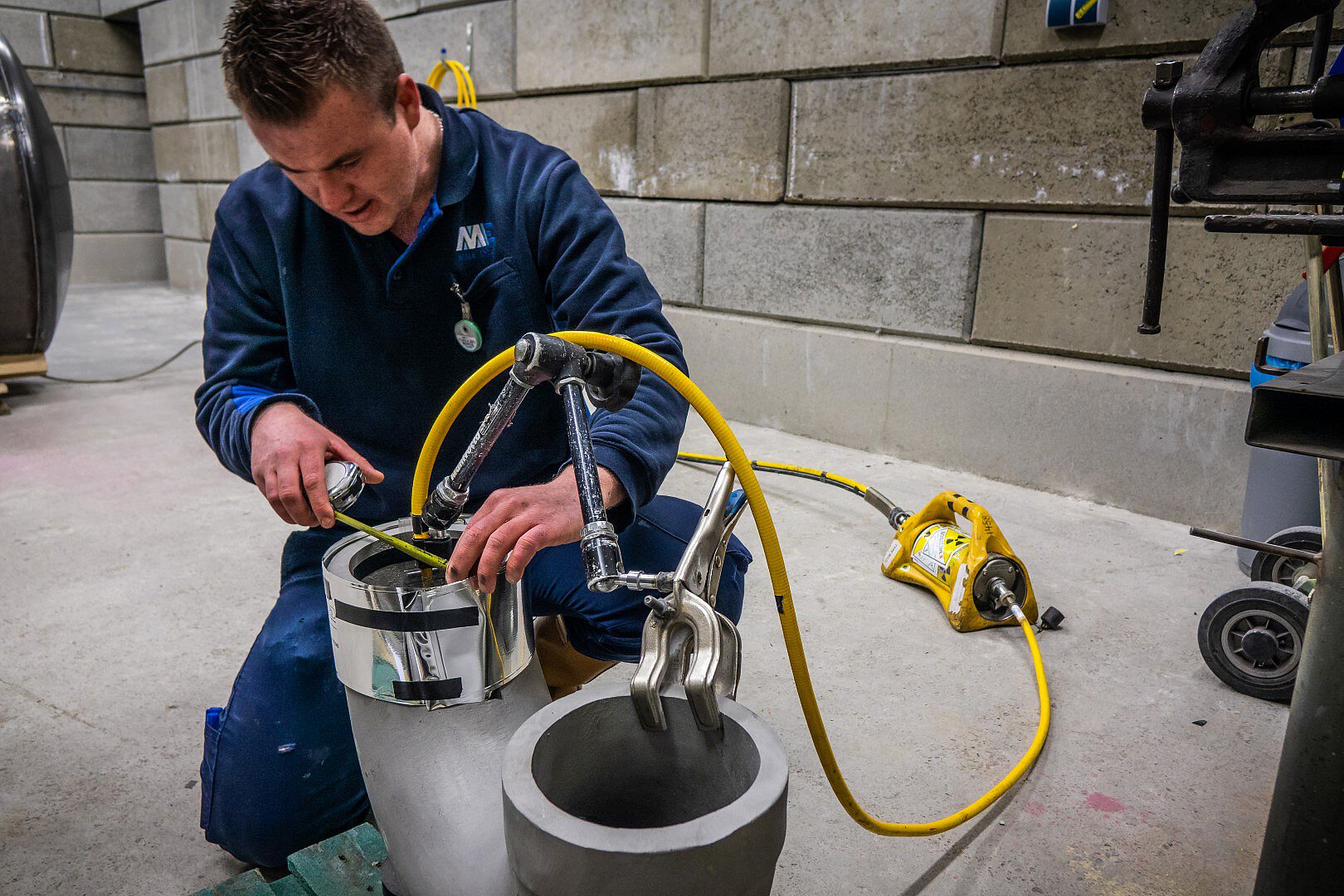

Industrial Radiographic Testing (RT) makes use of X-ray or gamma radiation to create images that can show defects hidden inside the material. This technology is widely used to ascertain material integrity of welds, castings, piping, machined parts, pressure vessels and other objects. The method is fully non-destructive and surface preparation of the test piece usually isn't necessary. In many cases, RT can also be used to inspect industrial installations that are in operation.
X-ray testing is possible for materials with a maximum thickness of 50 millimetres and gamma ray testing is possible for materials with a thickness varying from 10 to 120 millimetres.
Contact us if you have a question or want to receive a quotation!
Radiogaphic Testing (RT) involves using a source of X-ray or gamma rays. The source sends the rays through the test piece. A film that is sensitive to these rays is placed behind the object. The test piece absorbs part of the radiation. Areas with higher density or thickness absorb more of the rays resulting in an image on the film. The film is developed with chemicals just like regular photography film. After developing, the film is interpreted by a qualified inspector.
As most of us know, X-rays and gamma rays are dangerous for people and other living organisms. Therefore, much of the radiographic testing we do is carried out in our purpose built concrete bunkers. When Radiographic Testing is done on location, a safe perimeter is created around the inspection zone. No one is allowed in that perimeter during the inspection. For that reason this often takes place outside working hours. After testing, the inspected objects are not radioactive and can be handled safely. MME Group is fully certified to safely store, transport and use the X-ray tubes and gamma ray isotopes that are necessary for industrial radiography.
If your production process runs 24 hours a day and you can't avoid people being in the vecinity of the inspection zone, there are other options. Time-of-Flight-Diffraction (ToFD) and Phased Array (PA) are advanced volumetric inspection methods that don't use radiation. In many cases these can be used without interrupting the production process and have similar or better results. Contact us to find out what is the best option for your situation!
